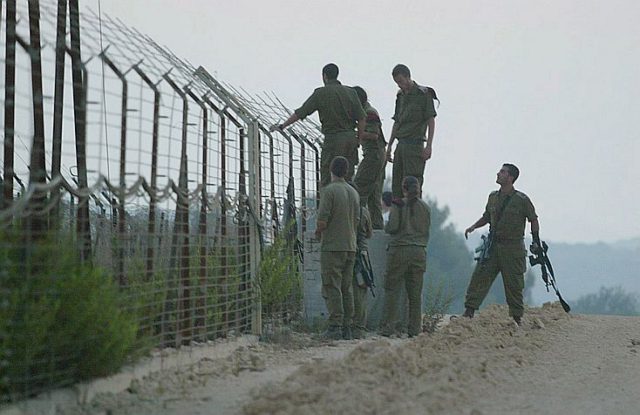
Israel’s red lines in Syria’s civil war have included returning fire against any entity that fires into Israel (whether Syrian, rebel, Hizb’allah, or Iranian); not permitting Iran or Hizb’allah or any of their Shiite proxies in Syria to establish permanent bases within a specific distance of the Israeli Golan border; and not permitting weapons beyond a certain level of lethality and sophistication to move from Syria to Hezbollah. To enforce those lines, the Israeli Air Defense Force is suspected of carrying out attacks on a “scientific research center,” artillery positions, a “munitions factory,” and more. The Israeli government rarely confirms such strikes, but acknowledges that the Russians are informed of Israeli activity when necessary in an agreed-upon effort to limit the damage and not engage Russian forces themselves.
This has morphed into one of the most quietly effective relationships in the Middle East. Not an alliance, certainly, but the pragmatic leaders of both countries have concluded that each benefits by coordinating with the other.
Israeli prime minister Benjamin Netanyahu had a full agenda this week, as he went to Moscow for a five-hour meeting with Russian president Vladimir Putin after their meeting in Davos. High on the list was Israel’s growing concern about the expansion of Hizb’allah missiles and missile production facilities in Lebanon – facilitated by Iran. “It’s no longer a transfer of arms, funds or consultation. Iran has de-facto opened a new branch, the ‘Lebanon branch.’ Iran is here,” wrote IDF Spokesman Brig. Gen. Ronen Manelis. “In Lebanon, Hezbollah does not conceal its attempt to take control of the state.”
But on this and other issues, Russia, Syria’s longtime ally, is looking to reduce its exposure. As the shape of the Syrian war changes, Israel may find its working relations with Russia undermined by Moscow’s desire to exercise influence in Syria generally from afar, and by its shifting relations with Iran.
Since the start of the civil war in 2011, Moscow has enhanced its political position in Damascus and across the region. It has also strengthened its security position by upgrading its naval bases at Tartus and Latakia, while acquiring an airbase at Hmeimim. Russia is leery of committing troops to the war (Afghanistan looms large here), and there are, in fact, very few Russian soldiers on the ground. Now, as fighting on some fronts wanes, the Russians want to pull even those back. Visiting Syria last month, Putin said he would withdraw most of the troops while maintaining the bases. According to Israel’s Ha’aretz newspaper, Putin told assembled Russian troops, “Friends, “the homeland awaits you.”
He had earlier said the military operation in Syria “is indeed in its final stages,” and the political process will begin to take precedence.
But while Russia makes plans to reduce its military presence in Syria, Iran is making plans to expand its influence — not in restricted air bases or naval bases on the coast, but in the Sunni heartland.
For Iran, Syria is part of the “Shiite Crescent,” the land bridge from Iran through Iraq, Syria and Lebanon to the Mediterranean Sea. Not only is it crucial in terms of controlling and supplying Shiite revolution across the region, it serves as a “lid” stretching across the northern borders of Saudi Arabia, Jordan and Israel — providing a means of harassing all three through proxies. But Syria is an awkward partner in the “Crescent,” being only 15-20% Shiite — and on top of that, Alawite, a heterodox branch of Shiism. In order to control Syria for the long term, Iran has to be on the ground in force.
As early as 2016, as the Syrian Armed Forces disintegrated, U.S. sources said there were more than 80,000 militia fighters controlled by Iran. Confirming the number last week, Israel’s ambassador to the UN, Danny Danon, said there were 3,000 members of the Islamic Revolutionary Guard Corps (IRGC), 9,000 members of Hizb’allah, and 10,000 “violent Shia militias recruited from across the Mideast, including Iraq, Afghanistan and Pakistan.” The rest are Syrian.
As for Lebanon, Mohammad Raad, a Hizb’allah leader poured gasoline on that fire, claiming Hizb’allah “has capabilities that can destroy the Israeli army,” and warning Israel against “doing something foolish… that will be destructive.” He called Israel “regionally and internationally isolated.” Other Hizb’allah leaders, seeking to cool the situation, denied Manelis’s assertion of Iranian control.
Israel is far from “regionally isolated.” In fact, Iran’s greatest concern at the moment is the burgeoning rapprochement between Israel and the Sunni Gulf States — especially Saudi Arabia. Israel is further bolstered by Vice President Mike Pence’s assertion that the U.S. won’t “let Iran dominate the region.” But movement by Russia out of Syria, leaving the ground game to Iran, could change the shape of Israel’s immediate neighborhood — to its detriment.





